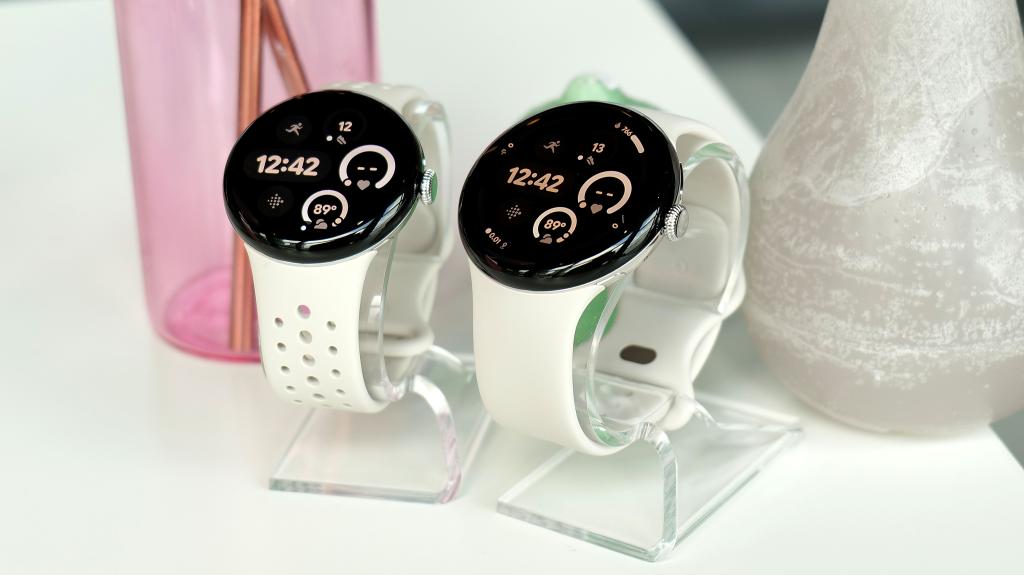Pixel Watch 3 Launches Life-Saving Pulse Detection Feature
Discover how the Pixel Watch 3’s Loss of Pulse Detection feature can potentially save lives by automatically alerting emergency services during critical health events.

Key Points
- The Pixel Watch 3's Loss of Pulse Detection feature detects life-threatening events and automatically contacts emergency services if the wearer is unresponsive.
- This FDA-approved feature combines heart rate monitoring, motion data, and AI algorithms to provide an innovative safety tool for users.
- While promising, the feature is not a replacement for medical monitoring and may not detect every loss of pulse event.
In today's fast-paced world, technology continues to make remarkable strides, especially in the realm of personal health and safety.
has made a significant leap forward with the Pixel Watch 3, recently announcing the acquisition of FDA clearance for its highly anticipated “Loss of Pulse Detection” feature. Scheduled for rollout in the U.S. by the end of March, this groundbreaking addition aims to save lives by quickly alerting emergency services during critical health events.
Understanding the Loss of Pulse Detection Feature
The “Loss of Pulse Detection” feature is designed to identify when a user’s heart has stopped beating due to potential life-threatening situations, such as cardiac arrest, respiratory failure, overdose, or poisoning. Within seconds of detecting a loss of pulse, the Pixel Watch 3 will initiate an alert system, prompting the user to confirm their well-being. If the user is unresponsive, the watch will automatically contact emergency services.

How It Works
Utilizing an advanced approach that combines a heart rate monitor with various sensors and sophisticated AI-driven algorithms, the Pixel Watch 3 assesses not only pulse data but also motion patterns to determine a loss of pulse event. According to Google representatives, the technology behind this feature has shown considerable promise, particularly for “unwitnessed” cardiac arrests where immediate intervention is crucial.
It’s worth noting that while this feature holds incredible potential, it is not designed to replace thorough medical monitoring or provide ongoing treatment. The feature may not detect every instance of a loss of pulse, and it is not intended for individuals with preexisting heart conditions or those needing continuous cardiac observation. In this context, users are encouraged to maintain regular medical consultations.
Performance Metrics and Real-World Application
Results from preliminary testing reveal that during a clinical trial involving 135 volunteers, the “Loss of Pulse Detection” exhibited a sensitivity of 69.3%. This means it accurately detected a loss of pulse 69.3% of the time, which, while not perfect, is a significant step toward enhancing safety. The specificity of the device, described by Google as yielding “1 false positive call over 7.75 user-years”, indicates that while the feature is designed to minimize unnecessary emergency alerts, caution remains paramount.
Google also emphasizes that users have opportunities to cancel alerts if they receive a false positive. For instance, the watch will inquire about any activities that may have triggered the alarm, such as sleeping on your arm or wearing the watch too loosely. By addressing these aspects, Google is working diligently to refine the user experience.
Complementing Other Safety Features
The “Loss of Pulse Detection” feature marks a significant addition to the Pixel Watch 3’s suite of safety innovations, which already includes functionalities like Car Crash Detection, Fall Detection, Irregular Heart Rhythm Notifications, and an ECG app. These tools collaboratively work to enhance user safety, providing a comprehensive health monitoring system that empowers users with greater control over their well-being.
Final Thoughts on a Life-Saving Technology
The integration of the “Loss of Pulse Detection” feature into the Pixel Watch 3 epitomizes the proactive measures being taken in the tech industry to address urgent health concerns. This smartwatch not only caters to tech enthusiasts but also plays a crucial role in enhancing personal safety—an incredibly empowering feature in today’s healthcare landscape.
As the end of March approaches, it will be exciting to see how this feature performs in real-world scenarios and impacts users’ lives. The collaboration of technology and health is clearly paving the way for a more secure and health-conscious future.


